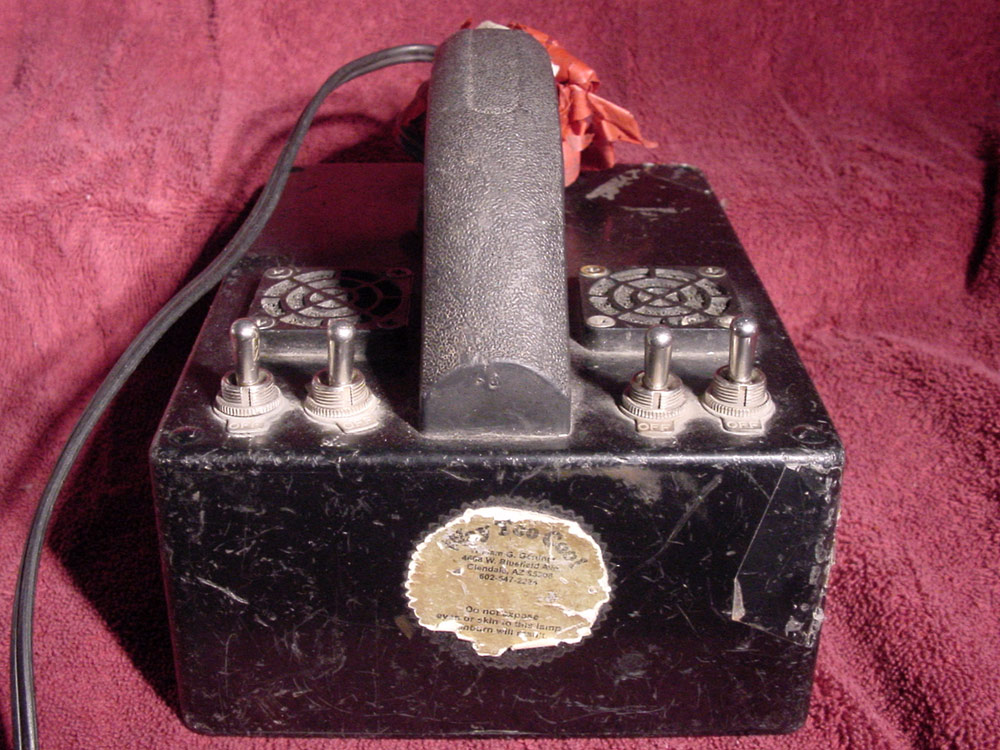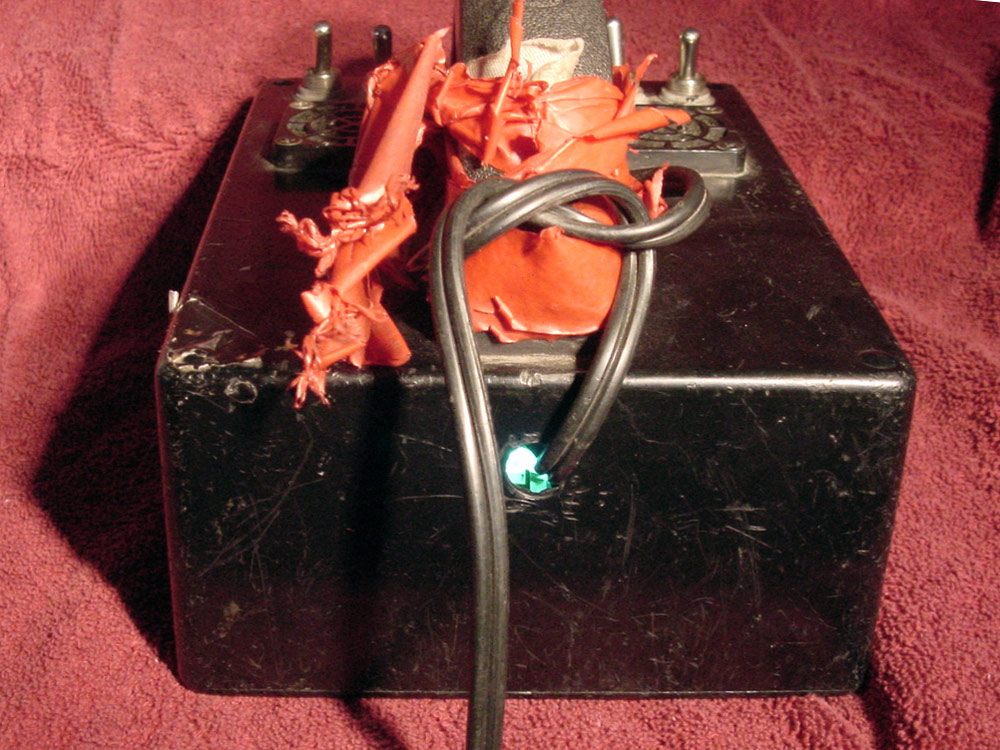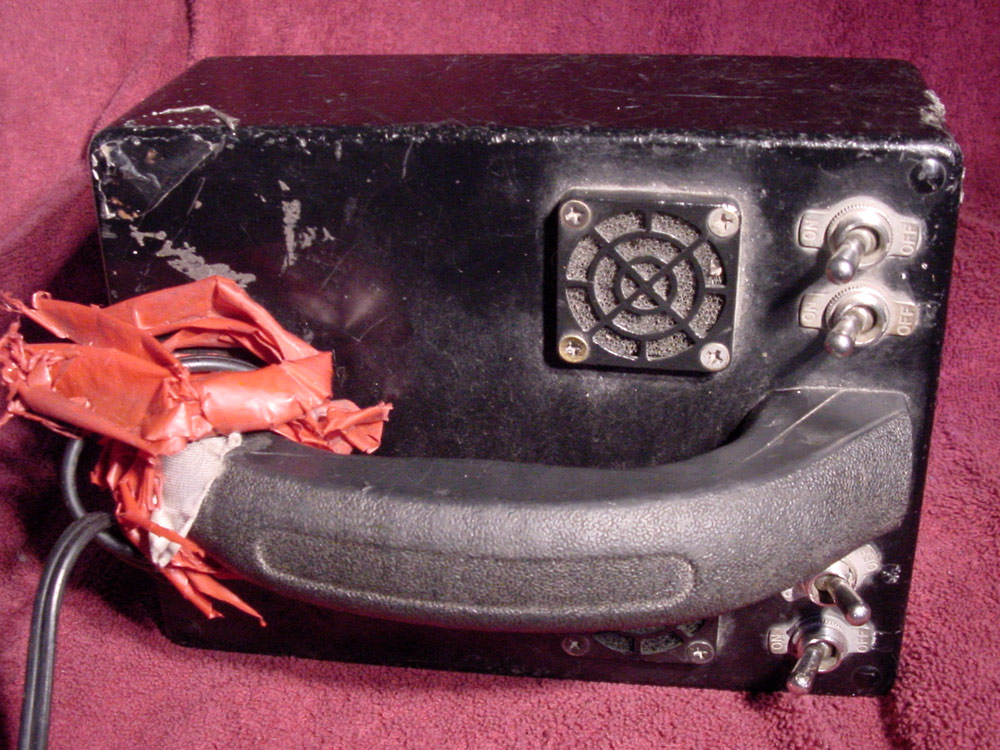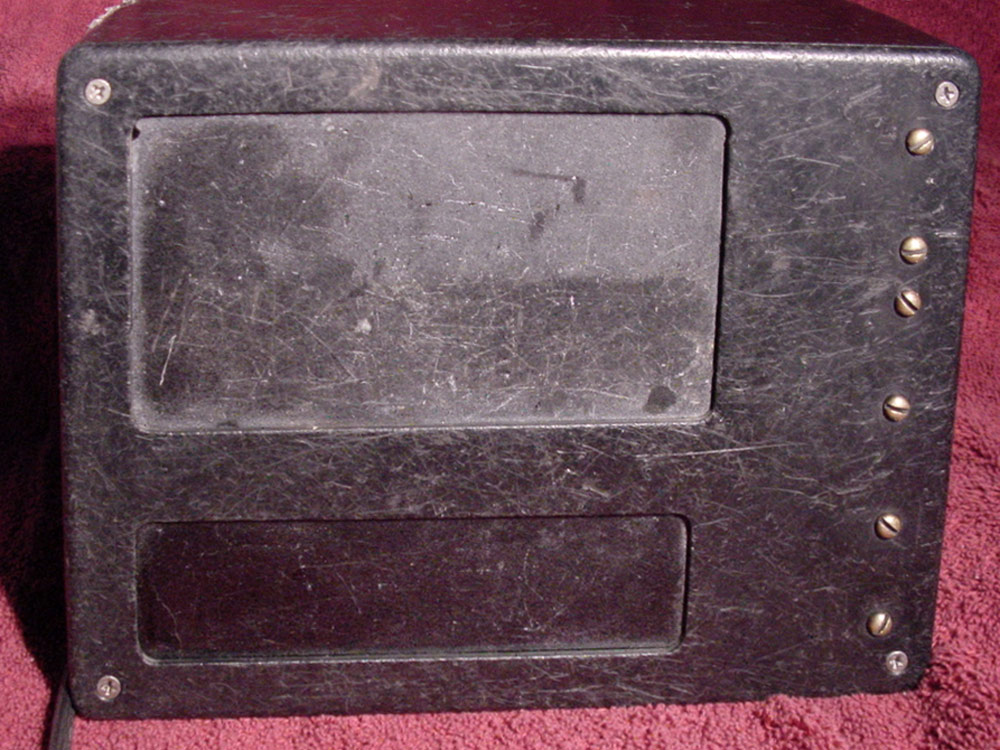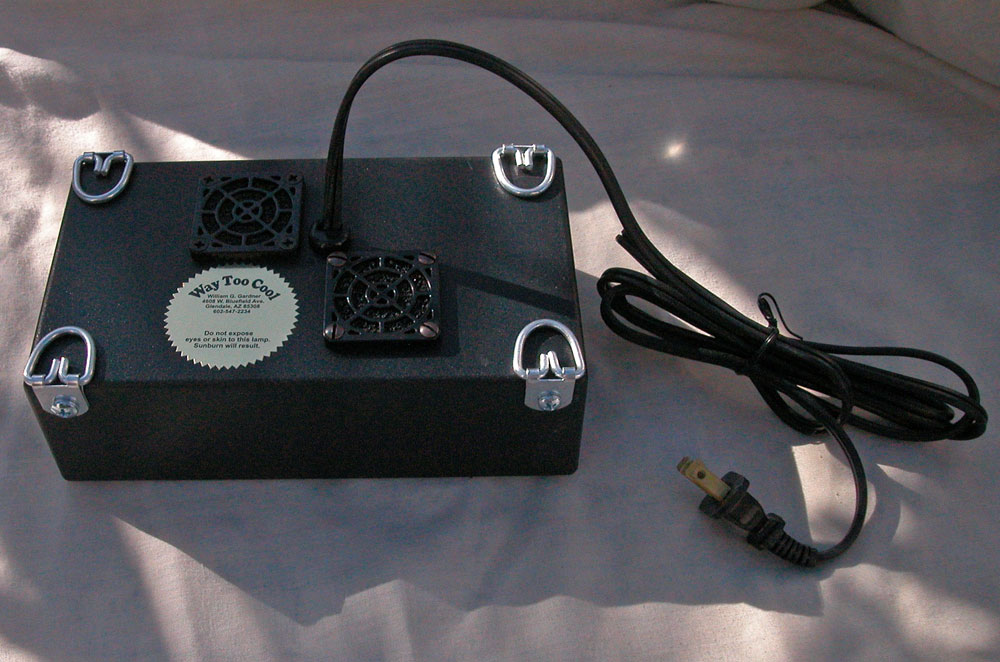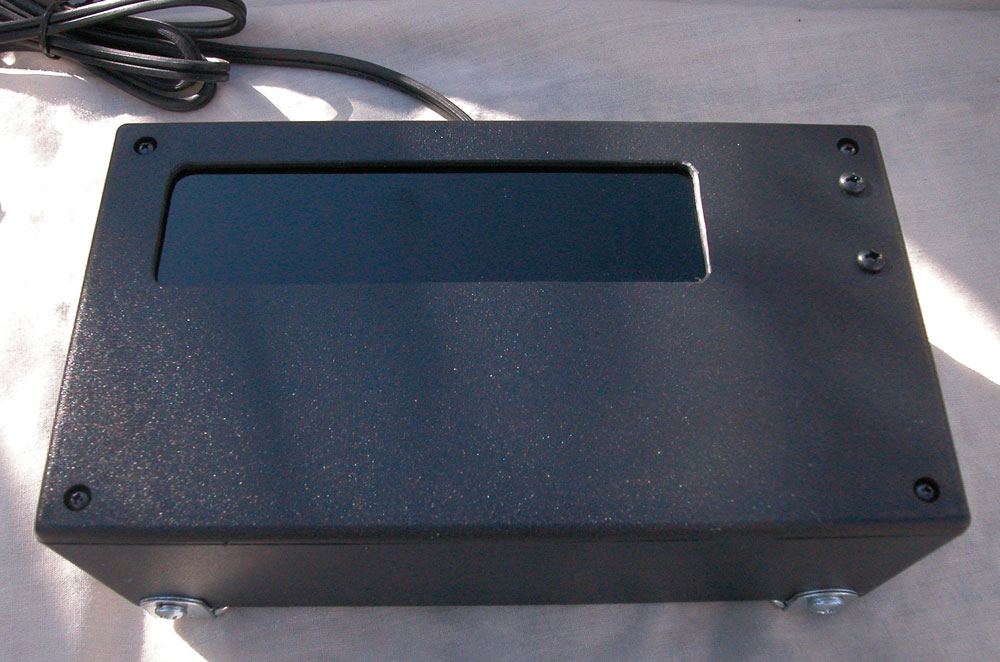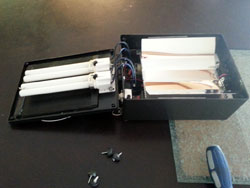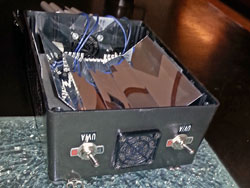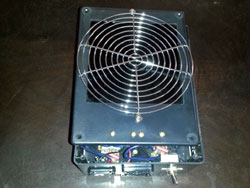Custom UV Lamps
Custom Built UV Lamps
 Since the WTC lamp fixtures are all custom built in our shop, it is easy to make minor changes to the basic design – for example: to make a fixture with a 95 watt short-wave UV C tube/bulb/lamp and with a 60 watt long-wave UV A tube/bulb/lamp. It is also easy to put switches in a switch box on a cord rather than on the lamp fixture itself. Similarly, it is easy to use all Hoya U325C filter glass so any combination of tubes/bulbs/lamps can be used interchangeably. Left handed versions are also easy.
Since the WTC lamp fixtures are all custom built in our shop, it is easy to make minor changes to the basic design – for example: to make a fixture with a 95 watt short-wave UV C tube/bulb/lamp and with a 60 watt long-wave UV A tube/bulb/lamp. It is also easy to put switches in a switch box on a cord rather than on the lamp fixture itself. Similarly, it is easy to use all Hoya U325C filter glass so any combination of tubes/bulbs/lamps can be used interchangeably. Left handed versions are also easy.
What is hard is a complete redesign for some esoteric purpose. Some changes require a nonrefundable engineering fee depending on how complicated the changes are. In some cases, I may decide that the new design should be offered as a standard fixture. Multiple examples come to mind. If you have a need for a custom designed lamp fixture please contact me to discuss your needs.
Examples of Custom Lamp Fixtures
1) Way back in 1998 when I started manufacturing these lamp fixtures, I had 9 watt singles and duals. At the Tucson rock show, Greg Lesinski wanted to know if I could fit a third tube/bulb/lamp into the fixture that had two tubes/bulbs/lamps. He commissioned me to make one with three tubes/bulbs/lamps and the 9 watt triple with UV C, UV B, and UV A was invented. Greg still uses that original lamp fixture and its 20 year life is a testimonial to the ruggedness and quality of the 9 watt WTC lamp fixtures.
2) Some years later, George Polman commissioned a 36 watt triple and he still uses it to this day.
3) A customer in Houston was just building a new house and he was designing a nice oak case for his fluorescent minerals. He wanted a way to operate a big 95 watt display lamp fixture from outside the case. He did not like my suggestion of switches mounted on the outside of the case. I agreed to think about how it could be done and the remote control idea was conceived. This did pose some challenges because the remote control switches are FCC and UL approved and there is no way to modify them without voiding their integrity. They are made to plug into a wall outlet and to plug the power cord into the switches. The way we made it work was to mount 5 outlets along the outside edge of the fixture so that the remote controlled switches could plug into the outlets. Small extension cords are plugged into the switches with the other end of the cord entering the fixture to provide power to each of the necessary components. I generally set the switches so that switch #1 provides power to the fan and to all the other switches. Switch #2 goes to UV C, Switch #3 goes to UV B, Switch #4 goes to UV A, and Switch #5 goes to the white light LEDs. However, it is really easy to change the order by moving the switches to other outlets in the side of the fixture. If you prefer Switch #2 to turn on the UV A, simply move it to the 4th outlet/extension cord combination which powers the UV A.
4) A museum in Florida wanted to make a whole series of 1' cube fluorescent displays and they wanted to have the fixtures be turned on in the morning, run all day, and be turned off at night all from the same switch. A fan to prevent the lamp fixture from overheating was a necessity. Also, the fixtures did not need a handle, or switches, but they did need a way to suspend them over the displays. I crafted a set of UV C and UV A 9 watt units, with a fan, and "D" rings, but no switches, and no handle. This started the desire to add fans to all of the 9 watt lamp fixtures.
Bat Research UV Lamp
John Gumbs of the BATS Research Center (Pennsylvania, USA) contacted me about a UV lamp fixture specifically to conduct research on the White Nosed Bat Syndrome. John had borrowed a 9 watt triple and discovered that the UV could identify tiny spots of fungal infection before the spots could be seen with the naked eye. After much discussion, I custom built a 12 volt DC lamp fixture with an extra-large piece of UV A Long-wave filter glass; two 9 watt UV A tubes/bulbs/lamps; and with the fan, vent, switches, and power entry port on the ends.
The unit has a removable handle and has rubber feet on both sides so the lamp fixture can be turned on its back with the filter glass pointing up so that a bats wing can be laid across the filter to transilluminate the wing. John developed his own masks for taking photographs. The researchers following in Johns path do very well using the fixture that was developed specifically for this research. It turned out that the fluorescent response is not actually the fungus, but is due to an immune response to the fungus. There is disturbing learning about this. One researcher presented a paper at a symposium and warned everyone that using this UV was very dangerous – that they had burned their eyes and skin; and burned the bats with the UV. They were using UV C instead of UV A because they did not know any better. UV B and UV C are dangerous. UV C will sun-burn the outside of the eye causing the outer layer to peel and it cause intense pain about 6 hours after the exposure, This expose to UV C is often called "Welder's Flash." UV B actually penetrates the eye and sunburns the retina which is even more dangerous. DO NOT point UV C or UV A at anyone's eyes! Proper UV eye protection should always be used.
This is a custom UV lamp we made for a client who studies bats. The lamp has several modifications including:
- Relocated Switches
- Lay-Flat Design
- Larger Glass Element
If you are interested in a UV lamp for bat research or other applications, please Contact Us today!
Read an article about the science behind this lamp and how it can be used to detect the fungus associated with White-Nose Syndrome (WNS) in bats.
